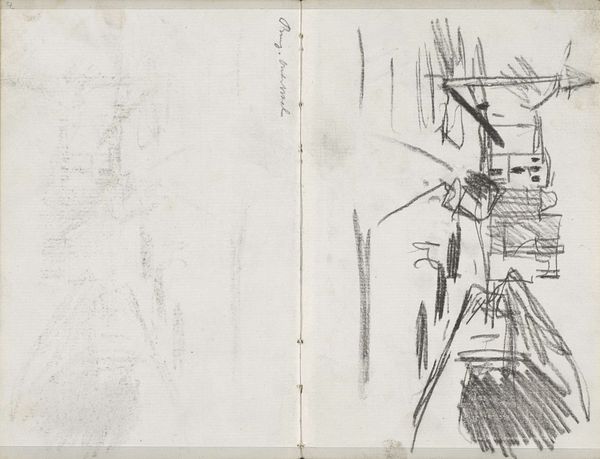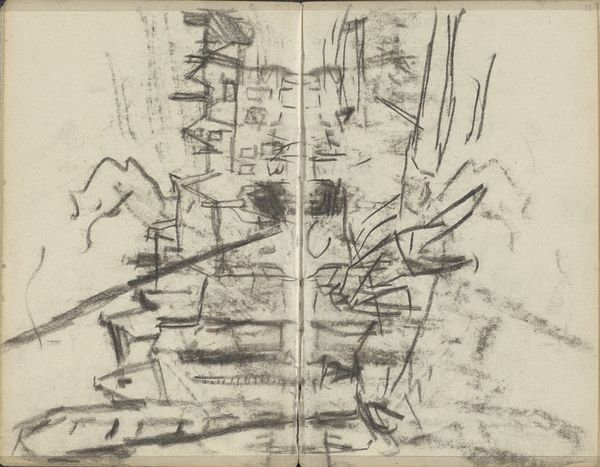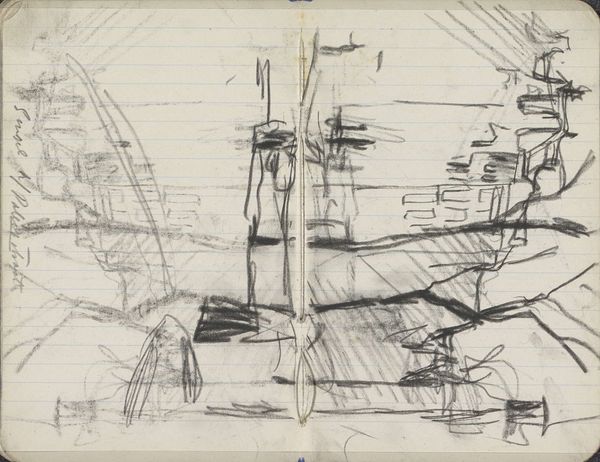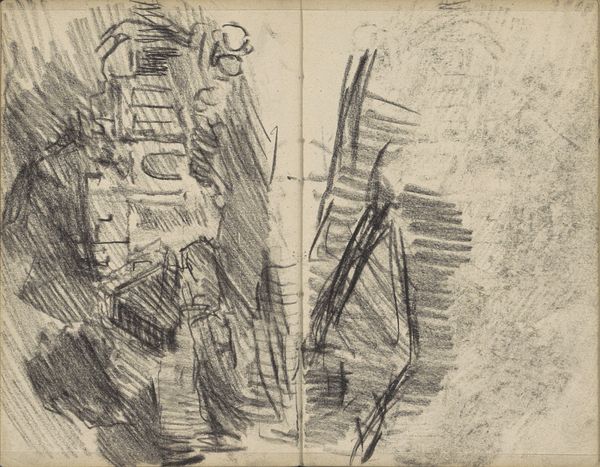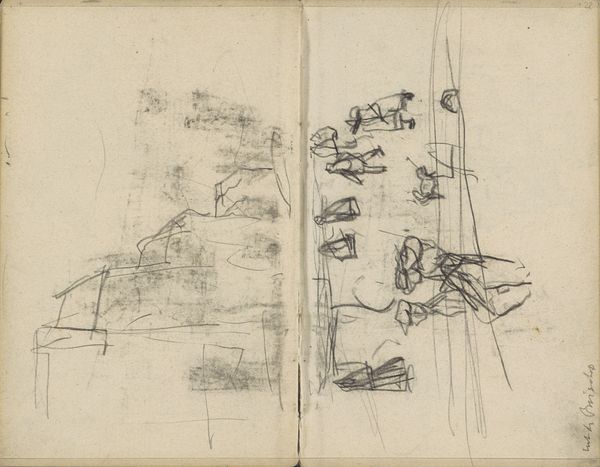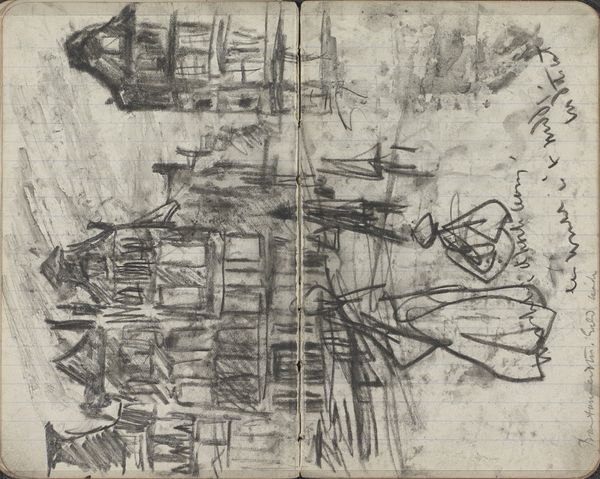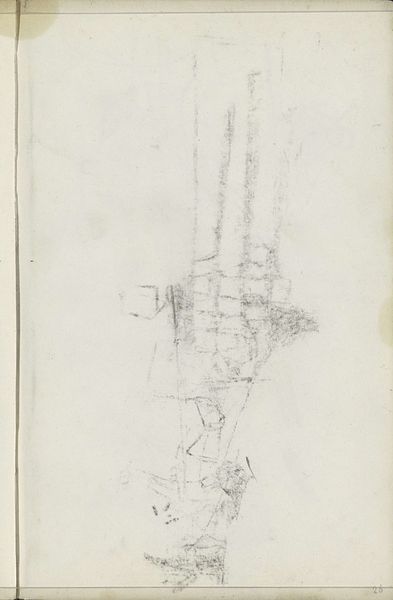
drawing, pencil
#
drawing
#
impressionism
#
pencil
#
cityscape
Copyright: Rijks Museum: Open Domain
Curator: Welcome. This pencil drawing, titled "Gezicht op Dordrecht met de Groothoofdspoort," offers us a glimpse into the world as seen through the eyes of George Hendrik Breitner, around 1887-1889. Editor: It strikes me immediately as a study, almost ethereal. There’s a rawness to it, an unfinished quality that invites the viewer to fill in the details. The cityscape feels more suggested than depicted, quite atmospheric. Curator: Exactly. The visible sketch lines provide insights into Breitner's process and how these structures take form, particularly his use of line weight. How he chooses where to apply pressure with his implement. The materials, paper, pencil, Breitner's labor, all merge to represent Dordrecht and its culture. Editor: I am curious as to its intended public. Given Breitner’s realist leanings and penchant for chronicling city life, would he have envisioned this raw sketch eventually finding its place within a museum like the Rijksmuseum? It gives the modern museum patron access to an idea of what art production means, to what parts are deemed ‘displayable’. Curator: A point well-made. This also speaks to the shift in taste making within art institutions themselves. The sketch as a desirable artifact for cultural analysis speaks to an evolving public understanding of what has value and what does not. The context is especially potent given the rise of Impressionism, a movement concerned with impressions more than precise representation. Editor: I agree. Breitner often focused on depicting working-class life and urban scenes, how do you read the politics of imagery here? Is he highlighting the architectural elements to assert civic pride or more interested in what a harbor meant in terms of industry? Curator: That’s a tension I believe he intentionally fostered. While the scene evokes industry, we’re seeing the city’s structures. Breitner acknowledges how labor produces those material goods and the very world we see around us. We the modern viewer must then negotiate the scene between reality and impression. Editor: The interplay is undeniable. To consider, that today visitors come to observe something of the process itself speaks to a wider democratization of art appreciation, hopefully a bridge into making too. Curator: An eloquent end. The labor, materials and contexts that artists inhabit is a rich subject to analyze for ourselves as viewers.
Comments
No comments
Be the first to comment and join the conversation on the ultimate creative platform.
